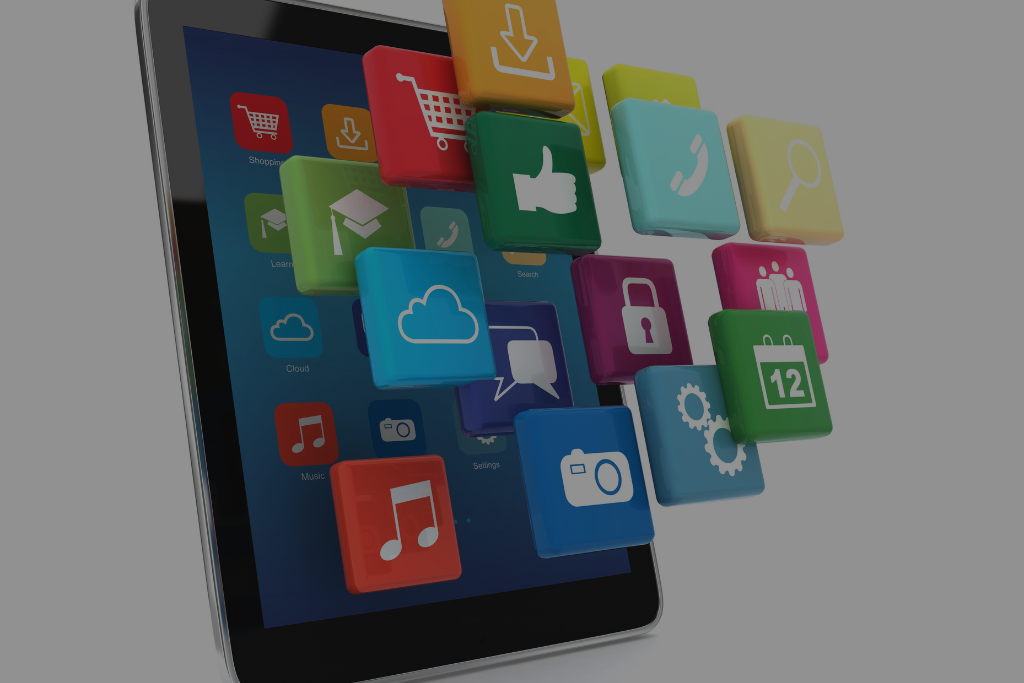Remote work opportunities have opened a new frontier for companies and workers alike, allowing employees to break free from geographical restrictions and embrace flexible schedules. From federal employees seeking hybrid roles to freelancers thriving in major industries, remote collaboration has become a mainstay of the modern workspace. This shift has also transformed how teams interact, with video calls replacing in-person meetings and co-working spaces replacing the traditional office setting. In this blog, we’ll explore essential remote work tools that can help you optimize employee engagement, maintain strong company culture, and boost employee productivity in any remote or hybrid schedule.
Project Management Platforms: Organizing Your Work
Project management tools are critical for remote workers who want to keep tasks, deadlines, and communication in sync without a constant physical presence. Whether you’re a remote employee, hybrid employee, or part of a remote company, having a dedicated board for projects and tasks is invaluable. Below, we’ll explore three robust digital tools for project coordination that cater to different roles and industries.
Asana: Streamlining Task Management
Asana is a pioneer among Project management tools, offering users the ability to break down work into tasks and subtasks while also providing a clear view of project progress. This platform operates in real time, letting teams add meeting notes, attach documents, and tag relevant collaborators seamlessly. Remote workers can benefit from Asana’s flexible approach to scheduling tasks for different days per week, accommodating everything from client meetings to internal check-ins.
Asana’s visual timelines help you schedule tasks effectively, ensuring that every worker knows their responsibilities without the constraints of a physical office. For companies that value open communication, this tool integrates well with Slack, Google Workspace, and other collaboration tools, making it a game-changer in building a healthy company culture. By removing the need for daily in-person meetings, Asana fosters an environment where each remote employee can remain productive and engaged.
Trello: Visual Workflow Solutions
Trello stands out with its signature board-based layout. This is perfect for remote or hybrid workers who enjoy a visual workflow that mirrors a physical Kanban board. You can create cards for each task, add attachments like Google Docs, and move them seamlessly from one column to another—such as “To Do,” “In Progress,” and “Done.” For remote roles, this structure reduces confusion about task statuses and priorities.
One advantage of Trello is its ability to integrate with multiple digital tools. Video conferencing plugins, calendar sync, and Slack notifications can be attached to each card, ensuring your team stays updated. With Trello, remote employees can plan the entire week and enjoy the flexibility of changing tasks without administrative hurdles. This fosters remote collaboration by cutting down on long email threads and promoting real-time updates, ultimately boosting employee engagement and productivity.
Monday.com: Customizable Project Tracking
Monday.com is known for its robust customizability, offering highly flexible boards that cater to role to role requirements. Workers can set up boards tailored to a specific industry or job description—especially beneficial for hybrid workers juggling tasks in both an official worksite and an alternative worksite. For instance, a marketing team might track daily tasks in one column while planning new digital ads in another, coordinating effectively even if half the team is at a physical presence in the office and the other half is remote.
Monday.com’s dashboards and reporting features give you a real-time snapshot of progress, enabling managers to review timelines, employee productivity metrics, and resource allocation with ease. By centralizing data in one place, Monday.com can significantly reduce the friction that sometimes arises when hybrid schedules split team members between different work environments.
Communication Tools: Enhancing Team Interaction
When remote employees or hybrid employees aren’t sharing the same office space, real-time interaction becomes a vital part of sustaining a strong company culture. Effective communication can bridge the gap between coworkers spread across multiple worksite locations, different days per week on-site, or even different time zones.
Slack: Real-Time Messaging and Collaboration
Slack has become synonymous with remote collaboration. Whether you need to share quick updates or hold longer discussions, Slack channels and direct messages offer an instant messaging system that keeps conversations organized. This fosters an environment where remote work employees can contribute ideas without being constrained by formal meetings.
Slack also supports file sharing (e.g., Google Drive or Dropbox integration) and offers voice or video calls. Companies that want to promote easy collaboration among remote job board recruits or in-house staff can use Slack to cultivate an active, responsive team environment. Additionally, Slack’s community-based approach fosters employee engagement by allowing for casual banter in dedicated channels, helping to maintain a cohesive company culture.
Microsoft Teams: Integrated Office Communication
For organizations deeply entrenched in the Microsoft ecosystem, Microsoft Teams stands out as an excellent solution. Teams integrates seamlessly with Microsoft 365, offering features like chat, channels, cloud file sharing, and integrated video conferencing. This streamlines internal communications for remote workers by ensuring that everything from documents to meeting notes is easily accessible.
Remote collaboration is also made simpler with threaded conversations, which help reduce confusion in large group discussions. For hybrid roles, the ability to schedule calls or hold quick standup meetings can keep employees focused on tasks regardless of their physical location. By adding apps such as Planner or OneNote, you can have a robust hub for day-to-day tasks, staying connected in real time while minimizing the need for constant in-person interactions.

Zoom: Video Conferencing Made Easy
Zoom has quickly become a top choice for hosting virtual meetings, client demos, or even weekly team catch-ups. Its user-friendly interface, breakout room capabilities, and screen-sharing features make it ideal for supporting large or small remote teams. With video conferencing recognized as a standard across industries—be it in major industries like tech or in freelance industries—Zoom remains a staple among remote work tools.
Remote employees can set up Zoom calls for a variety of purposes: from daily standups to recording asynchronous videos for training. Additionally, Zoom’s reliable technology helps employees save time and reduce frustration, encouraging consistent usage among hybrid employees who might be juggling days per week between an office environment and a home-based alternative worksite.
Cloud Storage Solutions: Efficient File Sharing
Whether you’re a remote worker collaborating with a fully distributed team or part of a hybrid workforce that transitions between official worksite and remote location, cloud storage offers a vital space for file organization and document access.
Google Drive: Collaborative Document Editing
Google Drive is a go-to choice for many remote companies, providing robust solutions for real-time editing and seamless integration with Google Docs, Sheets, and Slides. When paired with Google Hangouts or Slack, remote workers can coordinate tasks in real time—turning the collaborative editing process into an opportunity for real-time feedback. This fosters synergy among different teams, even if they rarely meet physically.
Additionally, Google Drive is a vital component of Google Workspace, making it easier for employees to navigate multiple tools under one umbrella. For companies that rely heavily on remote work employees, Drive’s shareable links help reduce overhead on email attachments, allowing team members to instantly access the latest versions of all files.
Dropbox: Simple File Management
Dropbox remains a leading solution for storing and sharing files across remote roles. Known for its intuitive interface, it seamlessly syncs data across devices, which is particularly beneficial when employees work in coworking spaces, at a client’s office, or at their home workspace. Dropbox’s advanced search functionality also makes it easy to locate a file among thousands, saving time and ensuring continuous productivity.
For businesses that rely on large videos or design files, Dropbox offers extended storage capacities. Coupled with robust security measures, it’s a reliable choice for safeguarding proprietary documents. Integrations with Project management tools such as Asana or Monday.com further streamline file handling, ensuring that remote job opportunities remain open to talents who can confidently work from anywhere.
Security Software: Protecting Your Data
With distributed teams and remote work employees often relying on personal devices in alternative worksites, data security becomes paramount. A breach can harm not only a single worker’s machine but also the entire network and company culture.
LastPass: Manage Passwords Securely
LastPass is a password manager that stores login credentials and auto-fills them across multiple devices. For remote collaboration, this is a critical line of defense—especially when employees need to share access to digital tools. Instead of emailing passwords or using weak logins, teams can securely manage credentials and store them behind end-to-end encryption.
This helps ensure that if a single set of credentials is compromised, the entire system remains safe. From a compliance perspective, especially for federal employees or any regulated bargaining unit employee, using a tool like LastPass can help meet stringent security standards. Ultimately, such security measures protect the remote work environment’s continuity and employee well-being.
HR Management Tools: Supporting Remote Teams
For a remote or hybrid workforce, HR administration can become more complicated. Companies must handle everything from alternative worksite details to health insurance policies for employees scattered across multiple geographies.
Employment Hero: Simplifying Employee Administration
Employment Hero is an all-in-one HR solution, especially effective for remote job opportunities spanning multiple industries. The platform helps manage payroll, day per week scheduling, health benefits, and Employee Benefits such as retirement or flexible spending accounts. Employment Hero also simplifies the process of drafting remote-friendly job descriptions and centralizing important worker information.
For remote or hybrid schedules, Employment Hero ensures that data remains up to date and consistent across the organization, reducing confusion. Managers can track personal records, handle new hires, and coordinate major policy changes, fostering a sense of stability that encourages employee engagement regardless of physical presence.

Time Tracking Apps: Monitoring Productivity
Monitoring how time is spent is crucial for building trust and transparency with remote employees. While certain remote roles measure performance by milestones rather than hours, many companies still benefit from time tracking to manage budgets and ensure accountability.
Toggl: User-Friendly Time Management
Toggl excels in user-friendliness, offering intuitive features that let workers track hours seamlessly for multiple projects. This can be particularly helpful in freelance industries, where employees often split time among various clients and tasks. Toggl’s reporting tools break down how time is allocated each week, enabling better resource planning and setting realistic deadlines.
Companies that adopt a flexible schedules model can harness Toggl’s data to refine scheduling, ensuring no one becomes overburdened. Additionally, Toggl’s integrations with popular collaboration tools like Slack and Asana enable a fluid workflow. For remote employees, quick toggling between tasks in real time fosters accountability while respecting employees’ autonomy.
Conclusion
Embracing a remote or hybrid schedule offers workers and businesses ample opportunity to thrive beyond traditional constraints, from coworking spaces to fully distributed setups. By leveraging digital tools such as project management platforms, communication apps, cloud storage, and robust security solutions, you can streamline operations, promote employee engagement, and nurture a dynamic company culture that transcends physical boundaries. Whether your industry deals with major enterprise tasks or niche freelance roles, these essential remote work tools ensure productivity, job satisfaction, and organizational success—making remote collaboration more than a short-term fix, but a sustainable path forward.